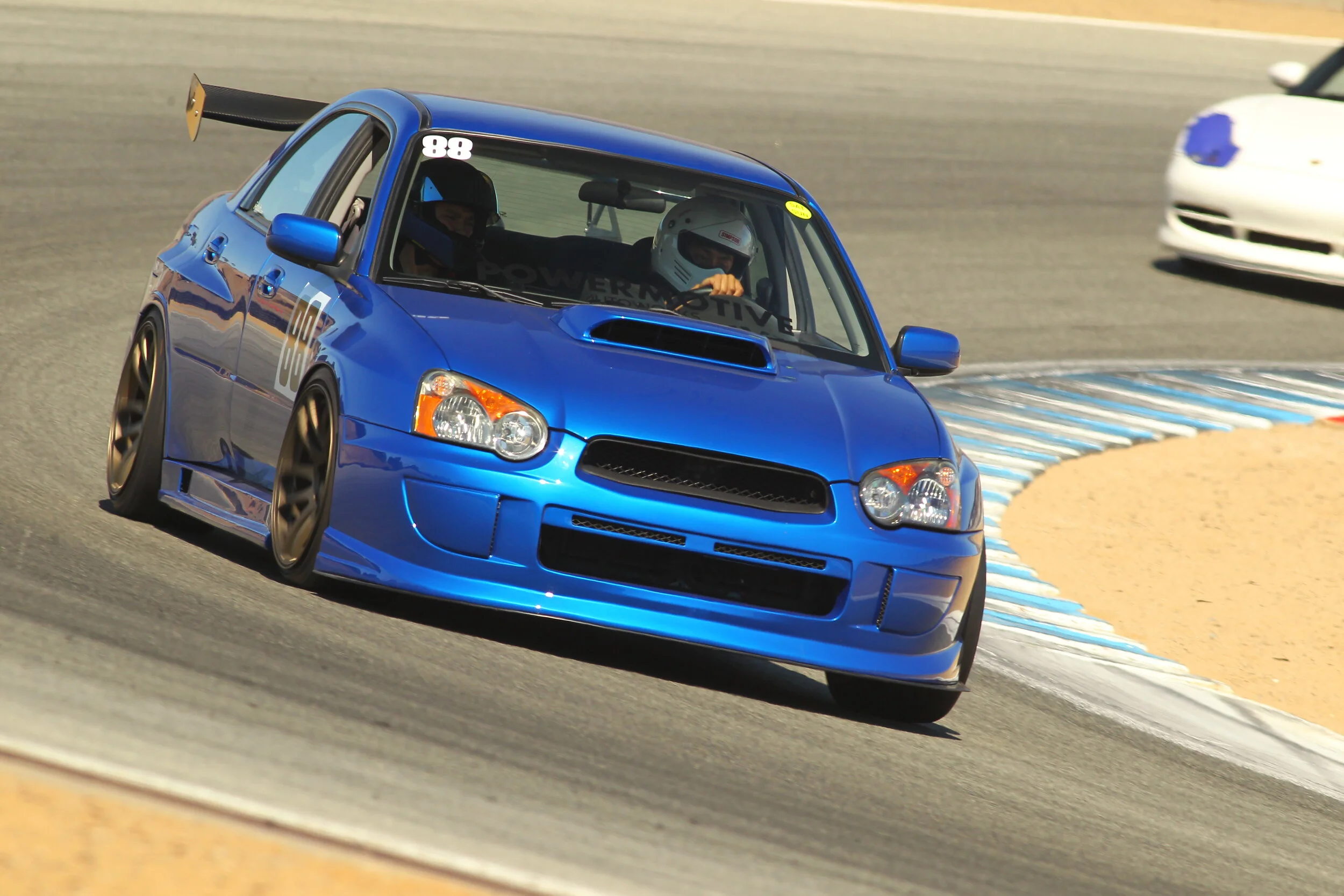HIGH-PERFORMANCE BRAKE FLUID: WHAT IS IT AND WHO NEEDS IT?
Upgrading to high-performance brake fluid isn’t the flashiest modification you can make to your vehicle, but if you ever intend to compete in an autocross event or try your car out at a track day, it’s a must-have. Moving to enhanced brake fluid is one of the most important upgrades you can make to any vehicle that will be driven quickly, and fortunately, it’s an easy one too.
Boiling Over
On a track, your brakes can generate significant amounts of heat as they bring your vehicle down from speeds you might not normally reach on the streets. Over the course of a driving session, this heat can build up so much that the temperature of your brake fluid reaches past its boiling point, causing it to vaporize.
Vaporized brake fluid can be responsible for the “spongy” feeling you might notice in your brake pedal after a period of intense driving. Fluids don’t compress — which is the basis of any hydraulic braking system — but gasses do, and if your brake fluid has boiled, then those gases are now present in the lines. In addition to sponginess and softness, you’ll also notice increased fade, which is the term for when you press down on the brake pedal but don’t get back the same level of stopping power as you had earlier in the session.
Temperature Rising
There are four Departments of Transportation standards for street brake fluid, each with its own “dry” boiling point (“dry referring to fresh-out-of-the-bottle fluid), ranging between 401 degrees to 518 degrees Fahrenheit. That’s perfectly fine for daily driving, but in a more hardcore environment that range is usually too low to be considered safe.
Enter High-performance brake fluid. This fluid still meets DOT standards, but features a much higher dry boiling point. How is this accomplished? By refining out as many impurities as possible, engineers are able to boost the heat resistance of the fluid by an impressive amount. In fact, some fluids boast a boiling point of 644 degrees Fahrenheit, although most hover around or just above the 600-degree Fahrenheit mark.
Plug and Play
The best news about high-performance braking fluid is that as long as it’s compatible with your vehicle’s braking system, you can flush out the stock fluid and fill it up with the race-ready stuff with no further modifications. We mentioned making sure the fluid is compatible with your vehicle’s braking system because some fluids are not meant for use with anti-lock braking systems, so do you research. Most track-oriented braking fluid is DOT 4, or DOT 5.1 compatible. It’s also important to keep in mind that you should still check, bleed and refill this type of brake fluid as needed in order to keep everything running safely and smoothly.
Not all vehicles headed to the track require high-performance brake fluid. If you car is relatively light and modestly powered, fresh synthetic fluid is most likely enough for your needs. For heavier, more muscled track steeds, however, high-performance fluid is wells worth the switch.
After a hard day at the track the entire brake system should be flushed and refilled with fresh fluid. The extreme heat cycles that the brakes endure during a race or hot lap session will cause the brake fluid to break down and begin to attract moisture (thus degrading the fluid). Even if you are not hitting the track, if your vehicle is equipped with a high performance brake system it should have the fluid serviced at least one a year.
Ask PM Autoworks about what brake fluid is right for you and your Subaru. We carry multiple high performance brake fluids to suite your needs on the street and track. We can give you our recommendation and bleed the system for you if you need us to. Safety is our main goal and rest assured, servicing your brake fluid regularly will help keep you safe.


